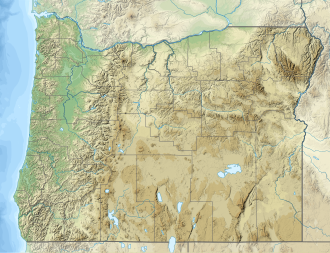| Lake Bonneville | |
|---|---|
 View eastward from Bonneville Dam. Lake Bonneville is upriver from the dam. The narrow section is the inundated Cascade Rapids. | |
| Location | Oregon / Washington, United States |
| Coordinates | 45°42′23″N121°48′39″W / 45.70639°N 121.81083°W |
| Type | reservoir |
| Primary inflows | Columbia River |
| Primary outflows | Columbia River |
| Basin countries | United States |
| Max. length | 46.8 miles (75.3 km) [1] |
| References | [1] |
Lake Bonneville is a reservoir on the Columbia River in the U.S. states of Oregon and Washington. It was created in 1937 with the construction of Bonneville Dam. The reservoir stretches between it and The Dalles Dam, upstream. It lies in parts of three counties in Oregon (Multnomah, Hood River, Wasco) and two in Washington (Skamania, Klickitat).


